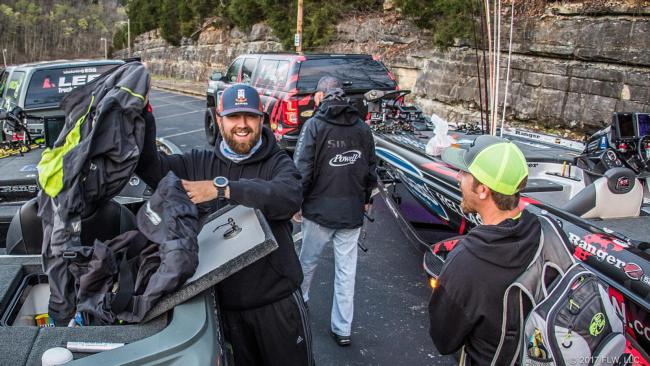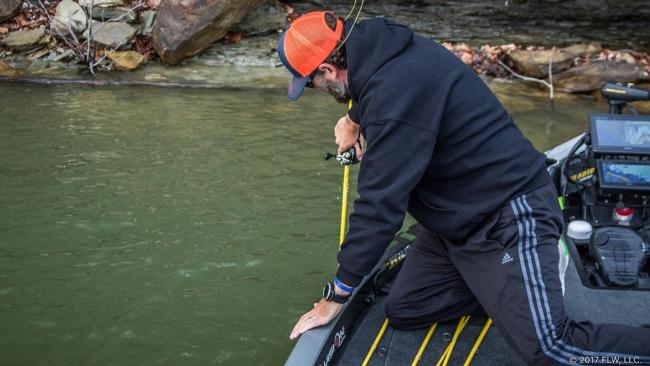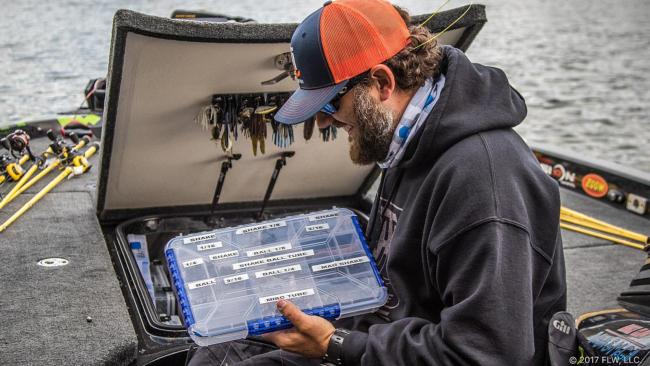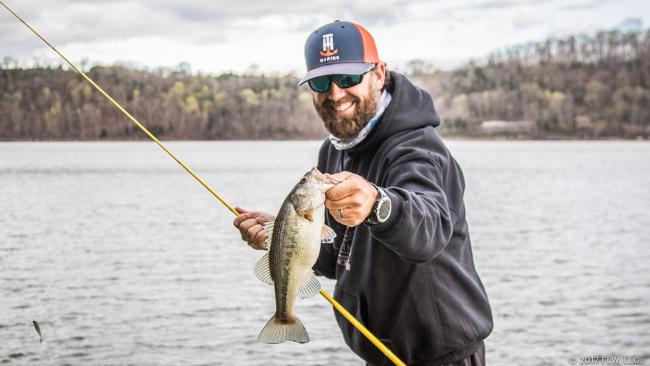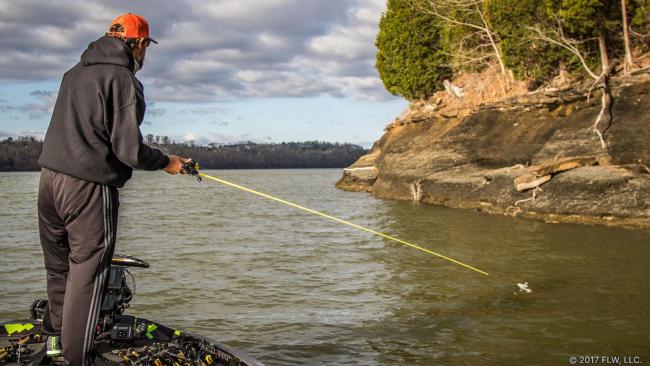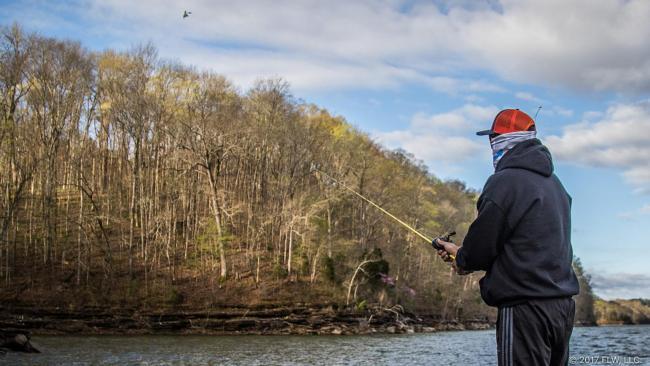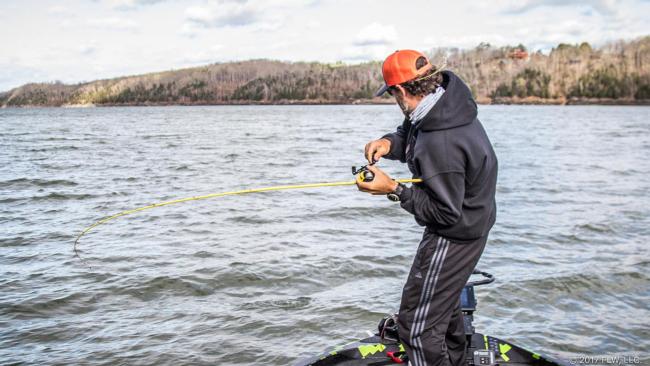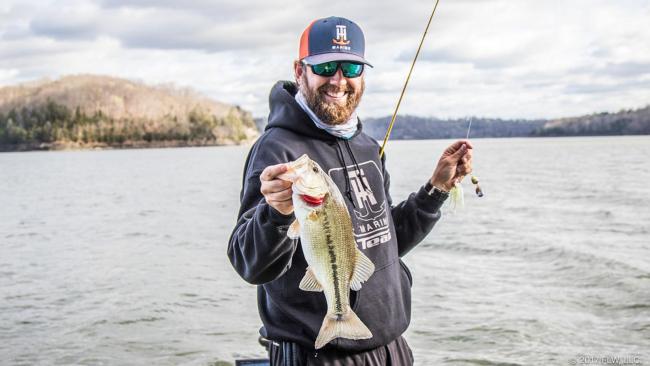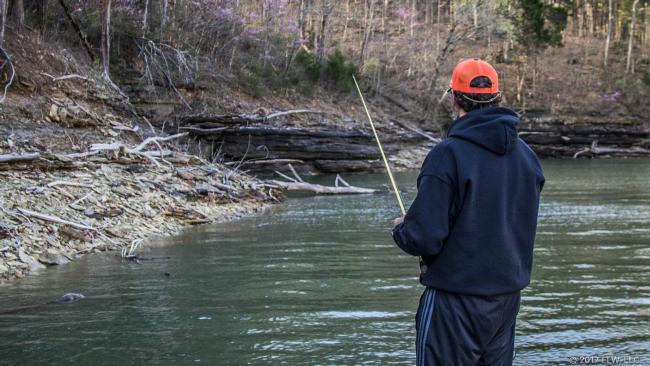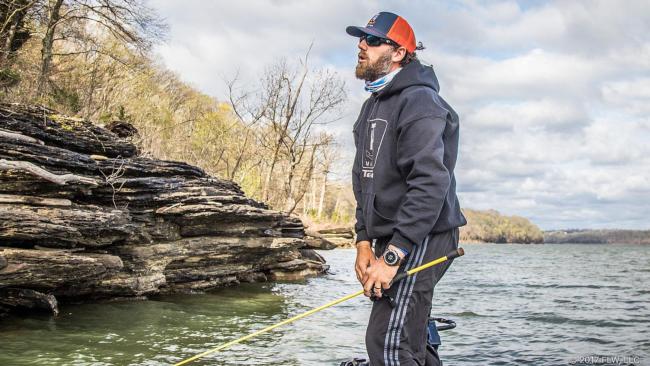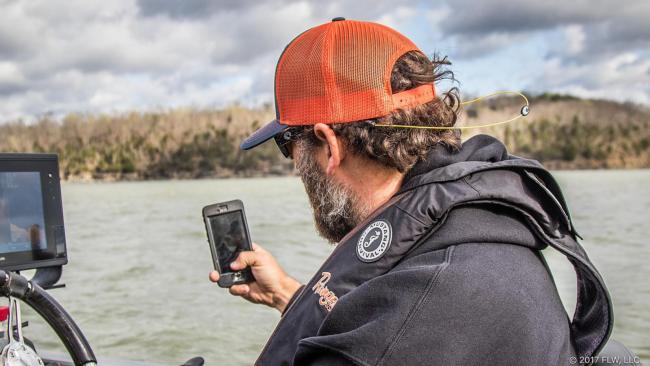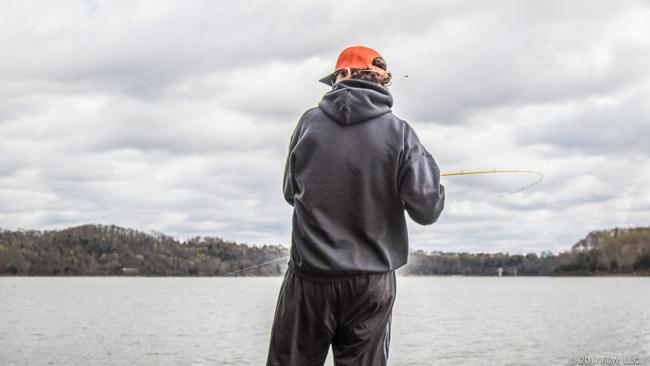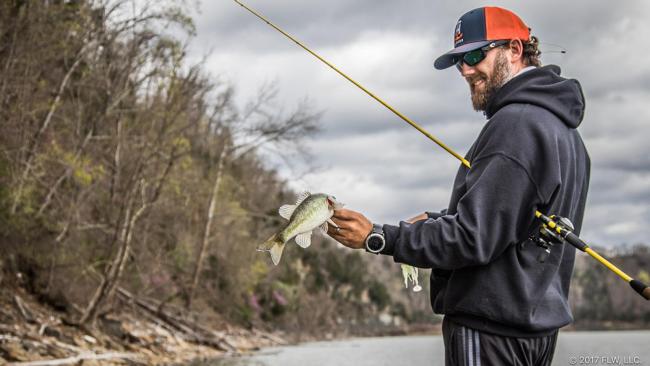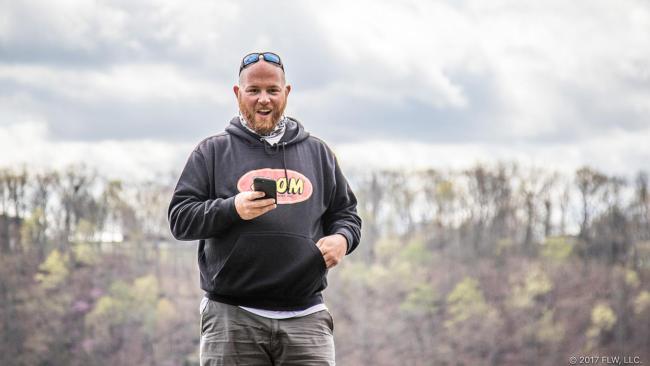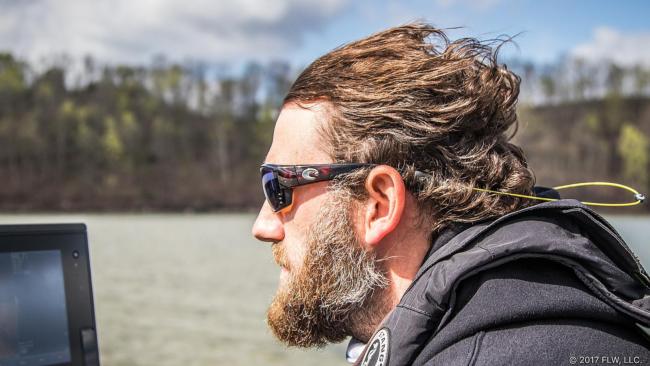Finishing Off Practice with Dunkin
How the sophomore pro approaches the final morning of preparation on Cumberland
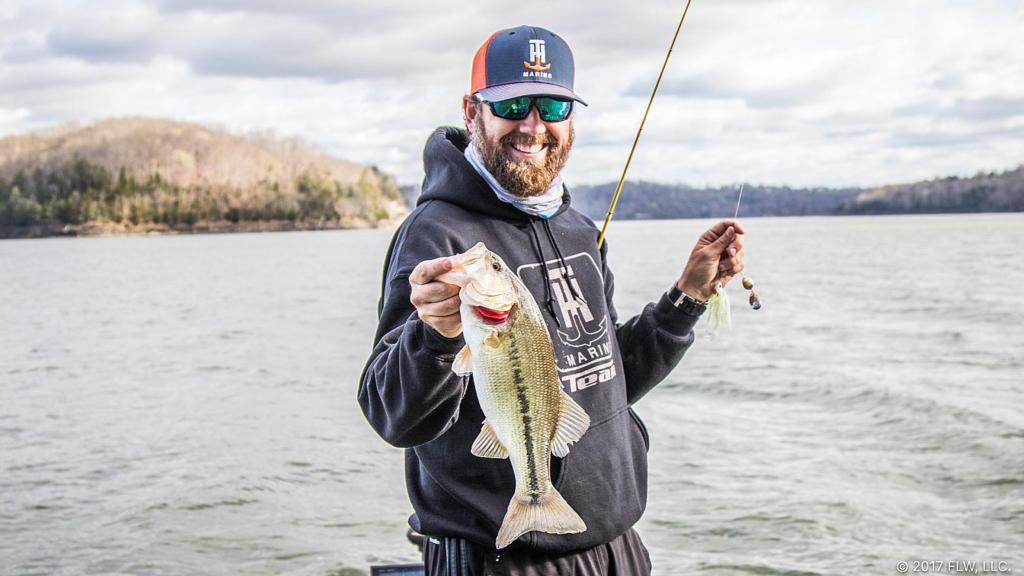
In the midst of his sophomore season, Luke Dunkin has established himself as one of the most well-liked and gregarious pros on Tour, but has yet to firm things up on the fishing side. He finished the season strong in 2016, banking top-20 finishes on Kentucky Lake and at the Invitational on Lake Norman, but the fourth stop of the 2017 season finds him stuck at 87th place in the standings. If Dunkin is going to make a run to qualify the Forrest Wood Cup, then it’s got to start now at the FLW Tour presented by T-H Marine on Lake Cumberland. With Dunkin still looking for fish, he was kind enough to let me hop in for the final morning of practice.
We meet up at the ramp at 7:30 a.m. ET and take it easy getting into the water. Wesley Strader and Dunkin are rooming together on Tour, so they arrive at the same time and go through the motions of prepping for the day together, including transferring co-angler Michael Brewer’s tackle from Dunkin’s boat to Strader’s so that we don’t have to roll with three in the boat. After getting the boats in the water, Dunkin and Strader take a few minutes to strategize while Strader builds a spinnerbait for Dunkin to try. Finally, with the sun starting to stream down, we roll down the river.
“I don’t know what we did before all these things,” says Dunkin as he drops his trolling motor. “I think that every morning when I get up here and turn on two graphs and a Hydrowave.”
Dunkin has chosen a main-river bank to start on, one that is steep and has a few standing trees on it. Though it’s super deep nearby, this bank has a bit of a shelf to it with plenty of cover for bass, creating a small oasis for them to inhabit along the bank.
Working along the bank, Dunkin demonstrates that a swimbait on an open-hook jig head isn’t the most snag-proof deal. After retrieving his bait a few times, he breaks off and re-ties. Continuing along, casting at about a 60-degree angle ahead of the boat, Dunkin pops his first fish of the morning – a largemouth that would probably be just shy of keeper status.
“Hey, we caught one on the practice gallery,” exclaims Dunkin. “We’re already off to a better start than yesterday.”
After breaking off again in a tree or rock, Dunkin re-ties and cranks up for fresh water.
Moving to a similar bank that is steeper and nearly devoid of trees, Dunkin pulls out a spinnerbait and gets to chunking, but not before fiddling again with his trolling motor. Throughout the morning, it’s been giving him fits and not turning on when he wants it to. As it turns out, a temporary solution is to simply set it on constant and roll down the bank – not bad, but something that will need fixing before tourney time.
As he fishes, Dunkin explains that he’s trying to follow up on a pattern he discovered at the evening of day two.
“Yesterday you’d hit four or five stretches without a bite,” says Dunkin. “Then you’d get four or five bites in a row.”
With no bites here, Dunkin hops across to the other side of the river.
Setting down on the opposite bank, Dunkin begins working down the lake against the wind. He starts just above a little trash-filled pocket in the bank and then works around it to the more exposed bank. Once he gets back in the wind, Dunkin hooks up with a keeper largemouth.
“Man, he freakin’ lit into that thing,” says Dunkin. “That was the W spinnerbait too!”
Moments later, Dunkin gets another bite and then loses a big spotted bass a few feet from the boat. As soon as he loses it, he drops a waypoint and moves on – he’s found at least one place to come back to.
“I’ve got a little pep in my step now,” says Dunkin. “If the trolling motor worked then I’d be all good.”
Our next stop is a pocket with a waterfall in the back. Sheltered from the wind and in slightly clearer water, the Tennessee pros picks up a wake bait and begins slowly cranking it along, hoping to draw up a spawning or prespawn bass. With no luck, he flips a jig under the waterfall before working out of the cove.
Working out of the pocket and back into the wind, Dunkin continues along the bank, and immediately begins to get bites.
“Goodness, that one hit it so hard my arm hurt,” says Dunkin after a particularly vicious strike.
Making a short run farther along the bank to a similar looking stretch, Dunkin gets going again. After a few misses on the spinnerbait (Dunkin doesn’t run a trailer hook in practice), he boats a couple non-keeper smallmouths – one on a spinnerbait and one on a small swimbait.
A few more bites later, Dunkin is content with his developing pattern – it’s time to make a move. Before that, he takes a moment to update his Instagram story, grab a drink and eat something. Today’s snack is Lance Nekot Peanut Butter Cookies – they are delicious.
Moving across the lake, Dunkin settles on a stretch of bank with an easier slope than the stair-stepping bluffs he’d been catching them on. It’s got a little dirtier water and looks like it could be a good deal for largemouths. Working down it, Dunkin catches a small spotted bass and expounds on his philosophy regarding the 18-inch limit on smallmouths.
“My thinking on the smallmouths is that it’s a crap shoot,” says Dunkin. “You might catch three small ones and then the next one could be an 18-incher. I think you’ve just got to get where they live. As long as you’re getting bit the keepers will come, but you’re going to have to go through some obviously.”
After a couple more spotted bass and a long stretch of nothing capped by a decent largemouth, Dunkin picks up and heads for another likely looking bank. Along the way, he runs into Jason Johnson, who briefs him on his morning and then takes a minute to bemoan the weather. All week, the pros have been bracing for the arrival of a major front on Wednesday and Thursday, and Johnson is rightfully worried that his plans may have to be tossed due to the increasingly strong winds in the forecast.
Whatever happens, Dunkin says he’s got to try not to be concerned. His dad constantly tells him to stop thinking so much when he fishes, and worrying about the conditions doesn’t seem productive to him right now.
What does seem productive to Dunkin is one more stop and then a run back to the ramp. At about 11:30 a.m. ET he pulls the boat and heads to the service trailer. Not only does he want to get his trolling motor fixed for the last bit of practice, he’s determined to make a quick run to a nearby tackle shop to assess his spinnerbait options – he’s thinking some overnight shipping charges might be in his future. This is the perfect time for me to hop out of the boat and let Dunkin get everything sorted out to put in a solid effort in the final hours of practice.
